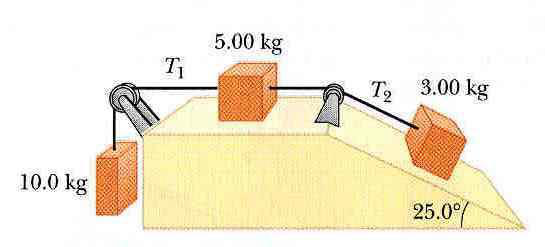Calculate the time takes the ball the air before strikes the wall
- It will then disappear 12 hours thereafter at 14h00 on the same Wednesday, the 4rd May 2022.
___________________________________________________________________ This paper consists of NINE (09) pages.
1. Two identical black and red Volvos, travel from Durban to
Ladysmith at
constant velocities of 25 m/s and 20 m/s respectively. The red Volvo
is
behind the black Volvo. The initial distance of separation between the
two cars is 2.0 m. Calculate the acceleration of the black Volvo after 5
s. (1)
2. A motorist travelling at 60 km/h brakes to a stop in 100 m.
1
5. How fast will the police be travelling when it catches the speedster? (3)
9. What is the time required for the ball to reach the ceiling? (3)
She throws a second ball upward with the same initial velocity, at the instant that the second ball is at the ceiling.
Use the above information to answer questions 12 to 15.
Calculate:
Use the above information to answer questions 16 to 22.
16. Calculate the time it takes the ball in the air before it strikes the wall? (3)
21. Whether the ball did pass the highest point (on its trajectory) or not when it strikes the wall, how far away was it from the highest point? (2)
22. What is the horizontal distance from the highest point to the wall? (3)
24. Which of the applied force(s) in figure 3 below will have the normal force less than the weight of the block? (3)
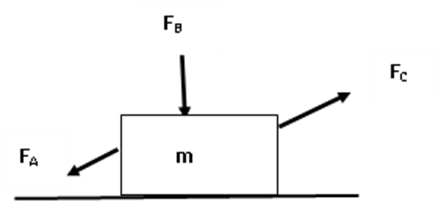
For mass m2, ∑Fy= (2)
4
27. A block of mass m2 (10 kg) on a smooth, horizontal surface is connected to a second mass m1 (5 kg) by a light cord over a light, frictionless pulley as shown in figure 4 below. A force F of magnitude 80 N is applied to mass m2 as shown. The applied force F is at an angle of 35o with the horizontal.
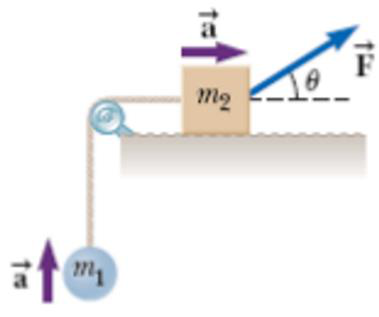
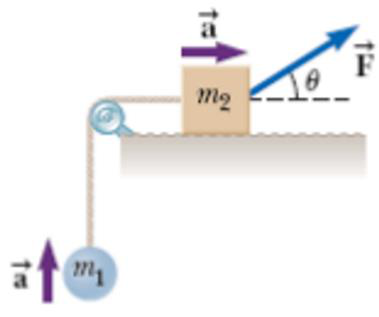
Figure 4
What will be the tension of the system? (3)
6
31. Consider the atwood machine in figure 5. Determine the acceleration of the two masses, where m1 is 6 kg and m2 is 10 kg. (3)
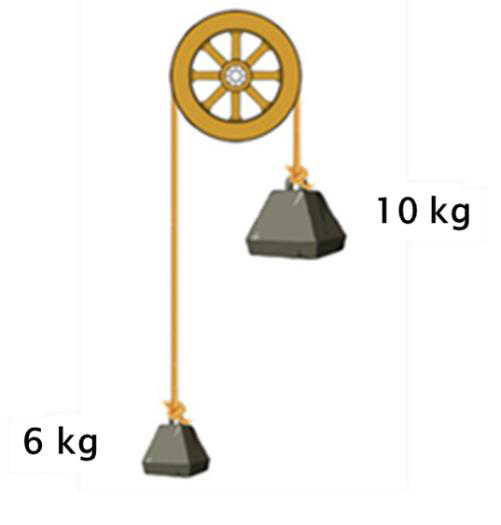
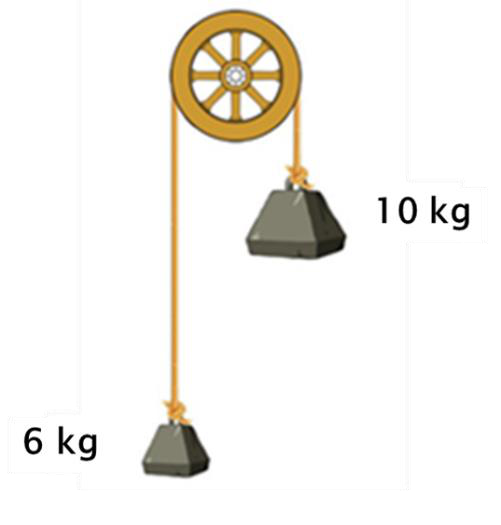
Figure 5
34. Three blocks of masses 10.0 kg, 5.0 kg and 3.0 kg are connected by two light strings that pass over frictionless pulleys as shown below. The acceleration of the 5.0 kg block is 2.5 m/s2 to the left, and the surfaces are rough. The 10.0 kg block is moving downwards.
ooooOOOOoooo
9

